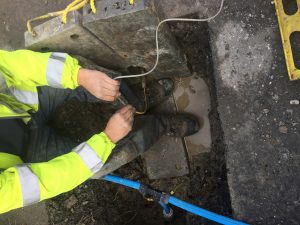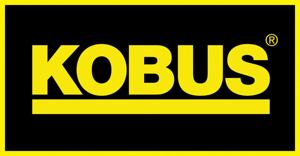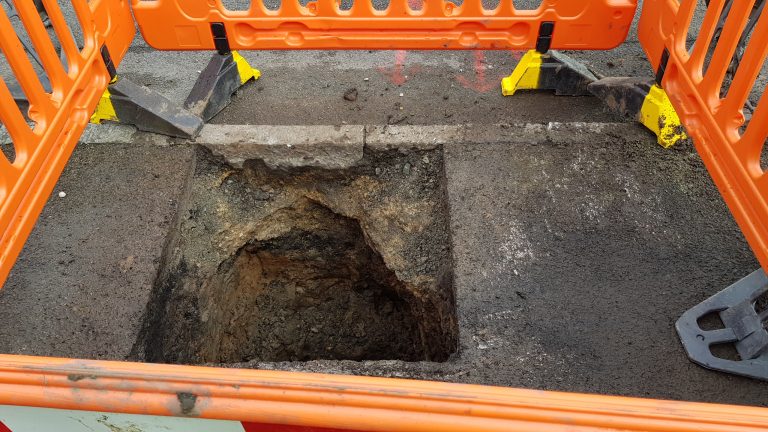Utility strike is a real and present danger. Utilities buried underground are susceptible to being damaged during excavation, repair and replacement work. This may be damage from mechanical digging with an excavator or manual digging by a contractor. Utilities can be located very close together under a pedestrian walkway or a road.

In the case of moling, open cut excavation and directional drilling, it is usual practice to excavate a new channel or pathway for the new service, while leaving the old pipe in situ. Therefore, in creating a new route for the new installation, there is an increased risk of hitting another utility in the vicinity.
Why is this a consideration?
Avoiding utility strikes is important as it ensures that operators and local residents are kept safe. Hitting and damaging other utilities, such as gas, HV power and LV power can be very dangerous. It could also be very disruptive to local residents (a loss of utility), very expensive and time consuming to repair or replace, require specialist from other utility to repair, and mean more time on the job for busy contractor crews.
If left unchecked?
To minimize risk of utility strike, contractors and utilities companies are already minimizing the use of techniques that have a high risk of utility strikes. For example, non-directional moling is a technique that cannot be used when other utilities are in close proximity in case the mole veers off course and strikes another utility pipe.
Costs will inevitably increase as companies become more risk averse to utility strikes. Jobs will take longer as contractors seek to locate the positioning of adjacent utilities and implement methods to avoid strikes.
Solution
Pipe pulling technology minimises the risk of utility strikes as it extracts an existing pipe and then tows the new pipe in along the bore hole created by the extracted pipe. There is less risk of striking another utility as the pathway is already in existence from the old pipe position.
Like this post and want more?
Be one of the first to download our new guide
Download our new ground-breaking Ten challenges facing pipe replacement contractors – and how to tackle them more effectively now here.



